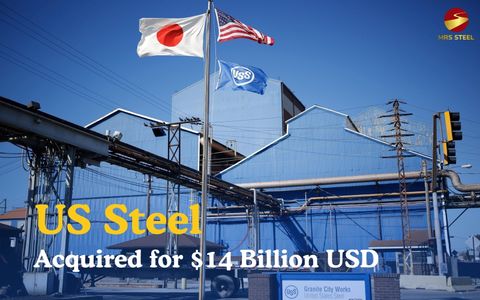Worldwide Crude Steel Production Declines in September

Steel NewsDate: 31-10-2023 by: Nhu Quynh
In the past September, the global steel industry witnessed a decline in crude steel production. Specifically, in September it decreased by 1.5% compared to the same period last year and dropped by 2.2% compared to the previous month, reaching 149.3 million tons. This has garnered significant attention in the market and serves as an important signal regarding the global economic situation.
The reasons for the decline in crude steel production are as follows
Global crude steel production plays a crucial role in determining the health of the global economy. It is a significant indicator for measuring the recovery from the COVID-19 pandemic and other challenges the world is currently facing. The 1.5% decline in crude steel production can be attributed to several key factors.
One of the main reasons could be the prolonged impact of the COVID-19 pandemic. Measures to control the disease, production and supply constraints, as well as the uncertain market conditions, have made it challenging for many steel producers to sustain their crude steel production levels.

Furthermore, other factors such as tense international trade conditions, shifts in demand from steel-consuming industries, and fluctuations in raw material prices may also have contributed to the fluctuations in crude steel production.
The decrease in crude steel production has an impact on the economy
In September, in Asia, crude steel production reached 110.7 million tons, a 2.1% decrease. China, the largest producer, contributed 82.1 million tons, marking a 5.6% decrease. EU countries produced 10.6 million tons, a 1.1% decrease compared to the same period the previous year. Turkey produced nearly 3 million tons, representing an 8.4% increase year-on-year. Crude steel production Russia's estimated production was 6.2 million tons, showing a 9.8% increase compared to the same period last year. In the Americas, the total production was 12.4 million tons, with the United States contributing 6.7 million tons, a 2.6% increase compared to the previous year. In Africa, production was 1.3 million tons, and Middle Eastern countries produced 3.6 million tons, decreasing by 4.1% and 8.2%, respectively, compared to the same period the previous year.
While a 1.5% decrease in global crude steel production may not be a large figure, it is still noteworthy because it can be a sign of uncertainty in the global economic situation. This decline can create pressure on steel prices and the steel supply, potentially affecting various other industries.
Global crude steel production plays a crucial and undeniable role in assessing the health of the global economy and the development of industries. Crude steel production not only affects the production and export capabilities of a nation but is also a significant measure of overall economic development. It reflects the balance of supply and demand, both domestically and internationally, and is often considered alongside other economic indicators such as GDP, exports, and production capacity.

In summary, global crude steel production not only reflects industrial development and the global economic situation but also has environmental implications. Monitoring and managing crude steel production also contribute to the stability and sustainability of the global economy.























































